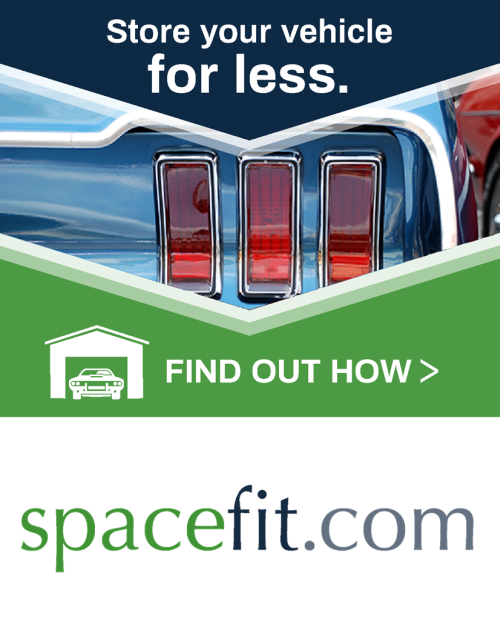

Welcome to Bumper to Bumper Radio!
Drive in anxious and cruise out confident with the best automotive information for your vehicle! Tune in to KTAR News 92.3 every Saturday from 11 a.m. to noon as Matt Allen helps listeners with their car problems. The show call in number is 602-277-5827.
Latest News From Bumper to Bumper Radio
New Dodge Challenger SRT Hellcat Redeye and Its 797-horsepower Supercharged HEMI® High-output Engine Drive 2019 Challenger Lineup

AUBURN HILLS, Mich., June 28, 2018 -- Dodge launches most powerful SRT Hellcat lineup ever
The new 2019 Dodge Challenger SRT Hellcat Redeye is the most powerful, quickest and fastest muscle car
Dodge launches the most powerful SRT Hellcat lineup ever. New 2019 Dodge Challenger SRT Hellcat Redeye and its 797-horsepower supercharged HEMI® high-output engine is the most powerful, quickest and fastest muscle car. Challenger SRT Hellcat boasts new rating of 717 horsepower and 656 lb.-ft. of torque. The 485 horsepower Challenger R/T Scat Pack Widebody features fender flares from the SRT Hellcat Widebody and adds 3.5 inches of width to the Scat Pack’s footprint.
Most powerful production V-8 engine with 797 horsepower and 707 lb.-ft. of torque
Quickest production muscle car with 0-60 miles per hour (mph) acceleration of 3.4 seconds
Fastest grand touring (GT) production car with a ¼-mile elapsed time (E.T.) of 10.8 seconds at 131 mph; and reaches a new top speed of 203 mph
2019 Dodge Challenger SRT Hellcat boasts new rating of 717 horsepower and 656 lb.-ft. of torque

ORLANDO, Fla. (July 31, 2018) – As international travel grows in popularity, Americans are choosing to protect their vacation investments by purchasing travel insurance. According to a recent AAA Travel survey, nearly 4 in 10 Americans (38 percent) are likely to purchase travel insurance for future international trips. For those travelers, trip cancellation protection is the most valuable benefit with 9 in 10 (88 percent) of those likely to purchase insurance saying that getting their money back, if they cancel a trip, is their top priority.
“More than 30 million family travelers will visit an international destination this year, 9 percent more than just two years ago,” said Bill Sutherland, senior vice president of AAA Travel and Publishing. “There are just too many unknowns, like family emergencies and natural disasters, which can throw an unexpected wrench into a planned vacation. Travelers are increasingly not taking chances and they’re choosing to invest in the value and peace of mind that travel insurance can provide, for international as well as domestic and cruise vacations.”
After the cost of their trip (70 percent), the leading influencers for travelers deciding whether to purchase travel insurance are: personal or family health concerns (69 percent); how far in advance the trip is booked (61 percent); and recommendations to purchase insurance by friends or family (57 percent).
12 News tries a monsoon driving simulator for the best tips on how to drive safely in a monsoon storm.

COLUMBUS, Ohio, July 25, 2018 -- As the summer hits its midpoint, drivers embark on one of the most dangerous periods on America's roadways. In fact, the month of August continues to be the deadliest driving month of the year:
Nationwide members reported more accidents in August 2016 (60,976) than any other month over the last four years.
15,914 people died in motor vehicle crashes in August during a five-year span (2012-2016), ranking it as the deadliest driving month of the year, according to the Insurance Institute for Highway Safety.
August 2 is the deadliest driving day of the year. There were more traffic fatalities (505) due to motor vehicle crashes on this date than any other of the calendar year over a five-year span (2012-2016), according to the Insurance Institute for Highway Safety.
Aggregated data collected through Nationwide's SmartRide program from drivers across 22 states* shows that the biggest contributing factors to auto accidents are hard braking, suddenly speeding up and time spent in congested driving conditions (which is approximated by time spent idling).
Based on more than 600,000 members and more than 1.3 million vehicles enrolled in the SmartRide program last August, Nationwide has identified which states show the highest frequency of factors known to contribute to auto accidents:
Hard breaking: Arizona, Georgia and New York
SmartRide drivers in Arizona had 2.6 hard breaking incidents per 100 miles driven last August, which ranked as the highest of any state in any month of 2017. Concurrently, 15.8 percent of Arizona SmartRide drivers' time in August was spent idling, the most of any month of the year for drivers in the Grand Canyon state.

Volatility is the trend for July gas prices as the rate for crude oil rises and drops amid lingering geopolitical concerns. In the U.S., the first half of the month saw pump prices increase from $2.85 to $2.89, while the second half is proving cheaper with the national gas price average down to $2.84 today. The national average has not been this low since early May.
“July gas prices have been on a roller coaster ride, but appear to be on a downward slope at the moment. If demand and supply stay consistent, prices have the potential to stabilize barring any major events – geopolitical or natural disasters,” said Jeanette Casselano, AAA spokesperson. “The market is also following this up and down trend lately. Last week, crude prices dropped below $70/bbl for the first time since June, but then returned above the price point to close out the week.”
On the week, Hawaii (+1 cent) was the only state to see gas prices increase, Montana ($2.93) was the only state whose gas price average held steady, while all other states saw prices drop as much as 13 cents.
Today’s national gas price average is four cents cheaper than last week, two cents cheaper than last month, but 57-cents more expensive than a year ago. Motorists can find gas for $2.76 or more at 52 percent of stations across the country.
Quick Stats
The nation’s top 10 least expensive markets are: Alabama ($2.54), South Carolina ($2.54), Mississippi ($2.54), Arkansas ($2.58), Louisiana ($2.58), Oklahoma ($2.60), Virginia ($2.61), Tennessee ($2.61), Texas ($2.61) and Missouri ($2.61).
The nation’s top 10 largest monthly changes are: New Mexico (-13 cents), Arizona (-12 cents), Nevada (-8 cents), Delaware (+8 cents), Utah (-8 cents), Nebraska (-7 cents), Ohio (+7 cents), Texas (-6 cents), Idaho (-6 cents) and California (-5 cents).
West Coast
Motorists in states in the West Coast region are paying the most expensive pump prices in the country: Hawaii ($3.78), California ($3.63), Washington ($3.41), Alaska ($3.38), Oregon (3.29), Nevada ($3.20) and Arizona ($2.94). Still, gas price averages in the majority of states in the region have declined on the week, with Arizona (-3 cents) leading the way. Only Hawaii (+1 cent) saw an increase.
According to the Energy Information Administration’s (EIA) petroleum status report for the week ending on July 13, inventories of gasoline in the region dropped by 500,000 bbl. They now sit at 30.3 million bbl, which is nearly 3.5 million bbl higher than total levels at this time last year. The surplus will likely help guard against price spikes in the event that supply tightens in the region this week.
Bumper Audio Clip of the Week

|
Bumper to Bumper host Matt Allen's shoutout to Shady Rays Sunglasses! Use Promo Code: BUMPER for 30% OFF! |



















